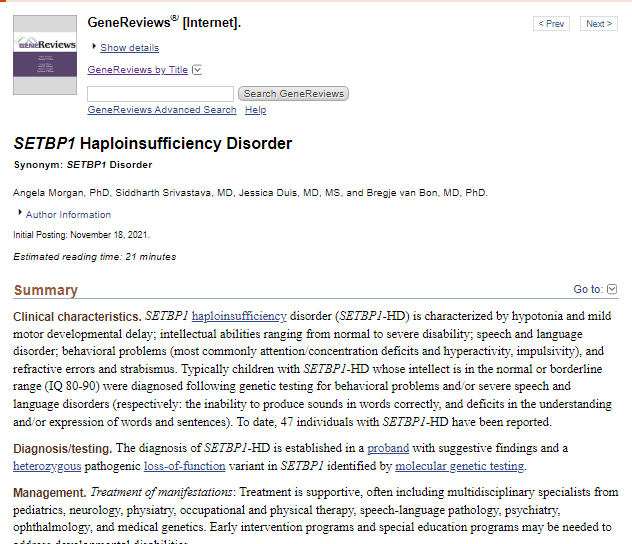Clarification of SETBP1 haploinsufficiency disorder (SETBP1-HD) gives rise to research developments
Clarification of SETBP1 haploinsufficiency disorder (SETBP1-HD) gives rise to research developments
Austin, TX — December 15, 2021 – Many SETBP1-HD families have waited years for a diagnosis and/or have been misdiagnosed due to the lack of awareness by clinicians around the disorder. Over the last 4 years, SETBP1 Society has directly funded research through various fundraising events such as the participation in the UPenn Million Dollar Bike Ride, GivingTuesday, and the Carousel of Possible Dreams. As a result of these fundraising efforts, SETBP1-HD has become more clearly defined leading to greater awareness of the research and making the information much more accessible to clinicians worldwide.
This progress did not happen overnight. In 2019, SETBP1 Society funded a $25,000 grant for one year to researchers Dr. Bregje van Bon and Professor Simon Fisher, with the intent to uncover molecular mechanisms and neuronal pathways involved in SETBP1 haploinsufficiency disorder using human cell-culture models. Dr. van Bon’s time spent meeting directly with SETBP1-HD families has allowed her to collect skin fibroblast samples from individuals with SETBP1-HD. These samples have continued to fuel the ability for Professor Fisher and his lab to examine human cell-culture models.
With this collaborative data, Dr. van Bon contributed significant insights to a joint research paper, Clinical delineation of SETBP1 haploinsufficiency disorder, that was published in 2021. SETBP1 Society was then able to develop a SETBP1-HD Resource Guide to make the data presented in this recent publication more accessible to SETBP1 families. The SETBP1-HD Resource Guide is available in English and French.
“It is great to see that several years later we have been able to really delineate this disorder. This publication makes it possible for any clinician to find clear information regarding this disorder. Up until this publication there was no overview about this disorder, which made it hard for non-genetically specialized clinicians to extract the useful information from existing medical literature.” said Dr. van Bon.
Most recently, the NIH Gene Review for SETBP1 haploinsufficiency disorder (SETBP1-HD) was just released earlier this month. This will serve as a guideline for medical professionals around the world to quickly research and understand SETBP1-HD allowing them to promptly guide recently diagnosed SETBP1-HD patients to meaningful care.
For more information about the SETBP1 Society: https://www.setbp1.org
View the full “Clinical delineation of SETBP1 haploinsufficiency disorder” publication here.
Learn more about Dr. van Bon: https://www.setbp1.org/videos/?loadVideo=vanBon
For more information, press only:
Kelsey Bennett
402-619-8695
info@setbp1.org

